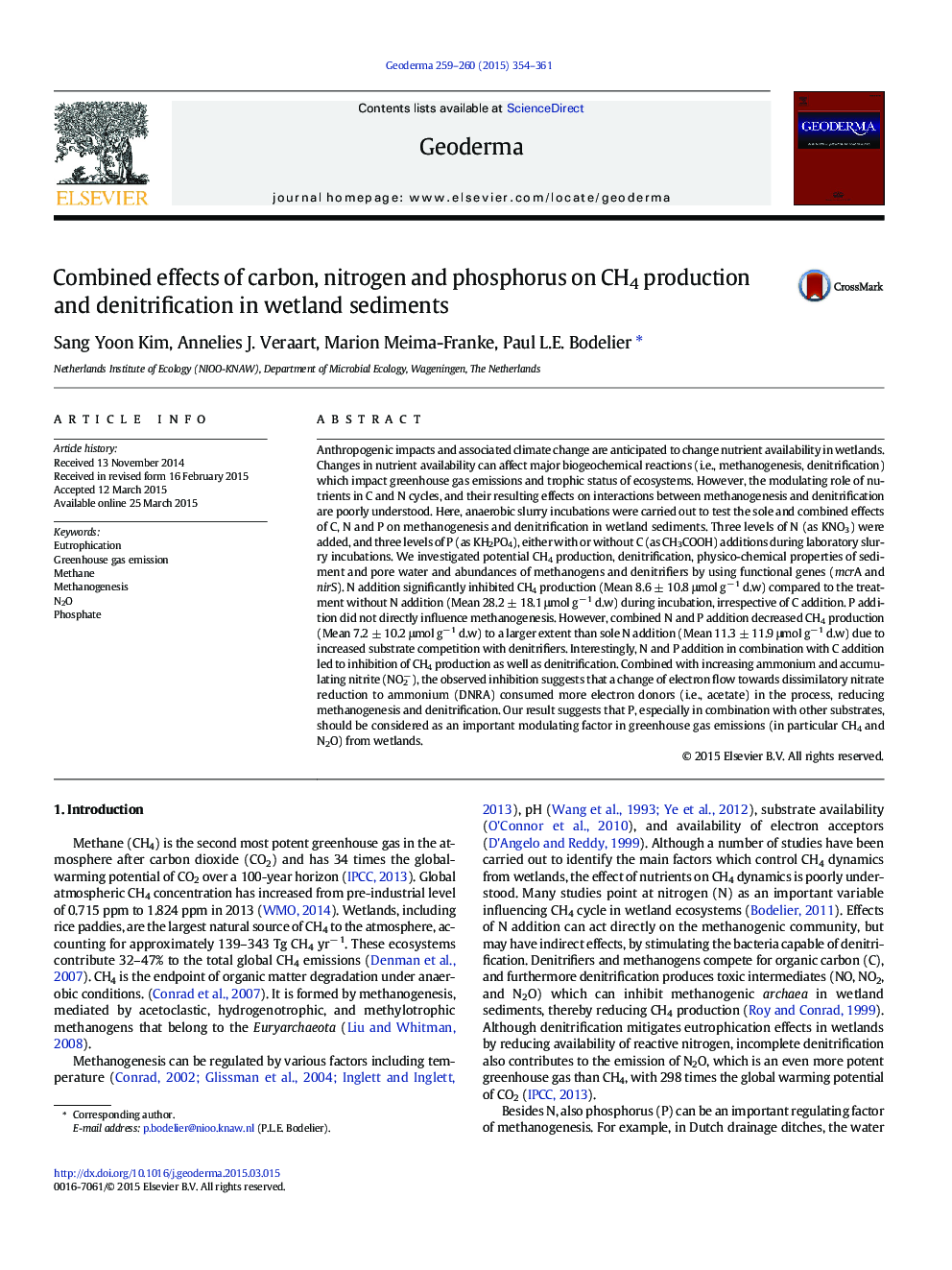| Article ID | Journal | Published Year | Pages | File Type |
|---|---|---|---|---|
| 6408543 | Geoderma | 2015 | 8 Pages |
â¢We tested combined effects of C, N and P on CH4 production and denitrification in wetlands.â¢P addition did not increase CH4 production, but increased denitrification.â¢Both N and P additions inhibited CH4 production due to competition for substrate.â¢Nutrient addition may increase competition for C, hampering CH4 production in wetland sediments.
Anthropogenic impacts and associated climate change are anticipated to change nutrient availability in wetlands. Changes in nutrient availability can affect major biogeochemical reactions (i.e., methanogenesis, denitrification) which impact greenhouse gas emissions and trophic status of ecosystems. However, the modulating role of nutrients in C and N cycles, and their resulting effects on interactions between methanogenesis and denitrification are poorly understood. Here, anaerobic slurry incubations were carried out to test the sole and combined effects of C, N and P on methanogenesis and denitrification in wetland sediments. Three levels of N (as KNO3) were added, and three levels of P (as KH2PO4), either with or without C (as CH3COOH) additions during laboratory slurry incubations. We investigated potential CH4 production, denitrification, physico-chemical properties of sediment and pore water and abundances of methanogens and denitrifiers by using functional genes (mcrA and nirS). N addition significantly inhibited CH4 production (Mean 8.6 ± 10.8 μmol gâ 1 d.w) compared to the treatment without N addition (Mean 28.2 ± 18.1 μmol gâ 1 d.w) during incubation, irrespective of C addition. P addition did not directly influence methanogenesis. However, combined N and P addition decreased CH4 production (Mean 7.2 ± 10.2 μmol gâ 1 d.w) to a larger extent than sole N addition (Mean 11.3 ± 11.9 μmol gâ 1 d.w) due to increased substrate competition with denitrifiers. Interestingly, N and P addition in combination with C addition led to inhibition of CH4 production as well as denitrification. Combined with increasing ammonium and accumulating nitrite (NO2â), the observed inhibition suggests that a change of electron flow towards dissimilatory nitrate reduction to ammonium (DNRA) consumed more electron donors (i.e., acetate) in the process, reducing methanogenesis and denitrification. Our result suggests that P, especially in combination with other substrates, should be considered as an important modulating factor in greenhouse gas emissions (in particular CH4 and N2O) from wetlands.
